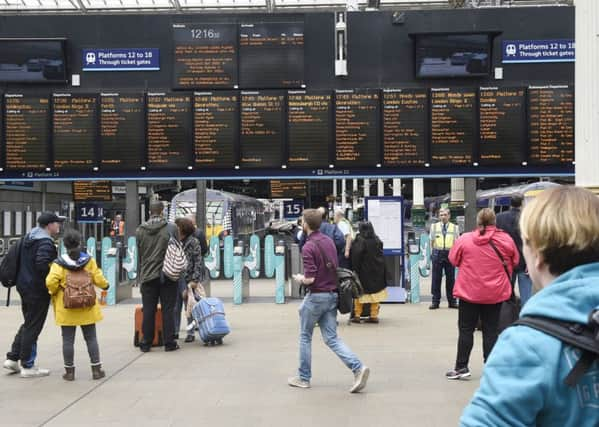Talking Point: Kickstarting a rail renaissance


Members of Railfuture Scotland – which represents rail users in Scotland – revealed the scheme at the Falkirk Model Railway Exhibition in Forth Valley College recently.
Not only is expansion of the network proposed but the frequency of most services is at least doubled.
Advertisement
Hide AdAdvertisement
Hide AdThese proposals include a top 50 list of stations to be opened or re-opened, from Beattock to Culloden, with a further 45 to follow.
As a chartered civil engineer and retired transport professional, I, along with my other colleagues in Railfuture Scotland, am passionate about the infrastructure of Scotland’s rail network and have produced this vision of an enhanced network.
The plans provides added links between Alloa and Dunfermline, Perth and Cowdenbeath, Perth and Laurencekirk, via Forfar, the Garngad Chord, Glasgow Crossrail and the Almond Chord, as well as branch lines to Grangemouth, Callander and Comrie.
These would enable new services such as Callander to Edinburgh via Falkirk and Edinburgh Gateway (for Edinburgh Airport); Glasgow to Edinburgh via Stirling, Dunfermline and Kirkcaldy; Grangemouth to Gourock via Paisley (for Glasgow Airport) and St Andrews to Glasgow via Dunfermline, Alloa and Stirling.
Advertisement
Hide AdAdvertisement
Hide AdThe proposed service frequencies are in line with the policy to ensure journeys to major employment, social and commercial centres of less than 20 miles have a 15-minute or better train service and those less than 60 miles have a 30-minute or better service.
Together with several new stations on the existing network such as at Abronhill, Bannockburn and Bonnybridge, these proposals will result in a significant modal shift from road to rail, boosting the economy, increasing prosperity and protecting the environment.
It is Network Rail’s job to look after and maintain the network and Scotrail’s job to operate passenger trains on it, but there appears to be no one charged with looking at extending and improving the network.
This is a government responsibility which politicians are shirking, instead passing it on to cash-strapped regional transport authorities and councils without giving them the financial ability to fulfil it.
It is only pressure groups like ours that are trying to kick start a renaissance in railway improvements.